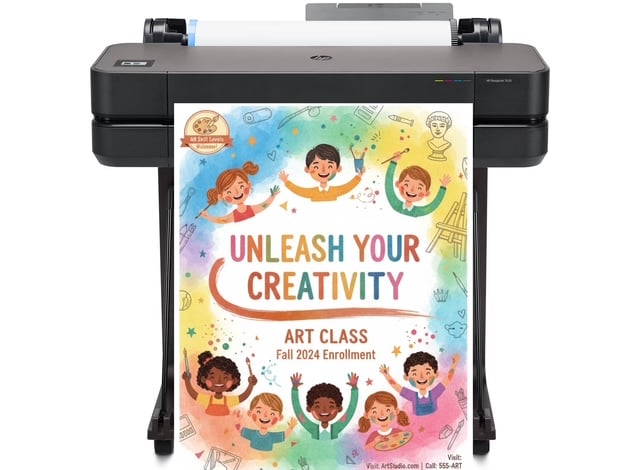
DISCOUNTED EDUCATION PRICING! CALL 1-877-891-8411. We Gladly Accept School Purchase Orders!

What If Your Student Records Were Tamper-Proof, Transferable, and Instantly Verified?
That’s not a futuristic dream—it’s what blockchain technology can offer schools right now. While most people associate blockchain with Bitcoin or NFTs, its core features—security, transparency, and decentralization—are exactly what education systems need in the digital age. From kindergarten to college, blockchain has the potential to make schooling smarter, safer, and more student-centered.
In this post, we’ll break down exactly what blockchain is, what it can do for schools, and why educators, administrators, and parents should be paying close attention.
Blockchain is a decentralized digital ledger. Every transaction or data entry is stored in a “block” and linked to a chain of previous records. Once information is recorded, it cannot be changed without updating every subsequent block—which makes it nearly impossible to alter or falsify data.
For schools, this means:
Let’s explore how these benefits translate into real-world school improvements.
Absolutely. One of the biggest challenges schools face is managing student records—grades, transcripts, diplomas, certifications, attendance, and more. Right now, these documents are typically siloed within each school or district, making it difficult to transfer or verify them.
With blockchain:
This is especially impactful for:
In an age where learning doesn’t end with formal education, blockchain offers a framework for tracking informal and ongoing professional development. Micro-credentials, badges, and skills-based certifications can all be stored and verified on the blockchain, creating a comprehensive, lifelong learning profile for each individual. This is game-changing for industries that prioritize upskilling and adaptability.
Today’s education system often treats students as a group instead of individuals. But what if learning paths could adapt in real time, based on a student’s progress?
Blockchain-enabled smart contracts could do just that.
Smart contracts are automated scripts that execute when conditions are met. In a school context, this could mean:
This type of system supports mastery-based education, where the focus shifts from grades to competency. Students progress when they’re ready, not when the semester ends.
When blockchain is paired with AI-driven learning analytics, schools can create a feedback loop that not only secures data but also provides real-time insights into a student’s learning style and pace. This combination can drive highly adaptive instruction that evolves with the learner—a new frontier for EdTech innovation.
Diploma mills, resume fraud, and questionable online certificates are real problems. Employers and universities often spend time and money verifying qualifications.
Blockchain removes the guesswork.
This could reshape the landscape for:
No more calling registrars or waiting weeks for transcript processing.
Yes, and it should be. But blockchain actually enhances privacy when used properly.
Instead of storing personal data directly on-chain, blockchain platforms can store a cryptographic hash—a fingerprint of the data. The actual data stays off-chain, protected and accessible only with the student’s permission.
This model aligns with data privacy laws like:
In a blockchain system, students and parents control who sees what and when—not third-party software providers.
Yes. Beyond academics, blockchain can bring financial transparency to school systems.
For example, a district could use blockchain to:
Blockchain’s transparent nature also helps reduce corruption in large public education systems. By creating a tamper-proof, auditable trail of spending, blockchain can restore public trust in school budgets and ensure that funds reach classrooms instead of being lost in bureaucracy.
Not quite—but it’s close.
The biggest hurdles include:
That said, blockchain is already being piloted in several forward-thinking institutions:
As adoption grows and costs go down, K-12 schools may be next.
You don’t have to be a tech expert to support blockchain in education.
Parents can:
Teachers can:
By being informed and asking questions, stakeholders can help drive innovation from the ground up.
To fully leverage blockchain, schools need to teach it. Educating students, staff, and parents about how decentralized systems work builds trust, reduces fear, and equips the next generation with skills they’ll need in a blockchain-enabled workforce.
Blockchain technology, while not a panacea for all challenges in education, presents a transformative opportunity to reimagine how educational systems operate. Its potential to enhance efficiency, bolster security, and prioritize student-centered learning makes it a compelling tool for the future. By addressing critical issues such as credential fraud, data silos, and outdated administrative processes, blockchain could fundamentally reshape the educational landscape, fostering a more equitable, transparent, and accessible system for all stakeholders.
The ability of blockchain to create immutable, verifiable records offers a robust solution to combat fraud in academic credentials, ensuring that diplomas, certificates, and other qualifications are authentic and universally trusted. This not only benefits students and employers but also enhances the credibility of educational institutions. Furthermore, blockchain’s decentralized nature enables seamless data portability, empowering students to own and share their academic records across institutions and borders without bureaucratic delays. This portability can streamline transitions between schools, support lifelong learning, and facilitate global mobility in an increasingly interconnected world.
Beyond administrative efficiencies, blockchain holds immense promise for personalizing education. By securely storing granular data on student progress, skills, and achievements, blockchain-based systems could enable tailored learning pathways that adapt to individual needs and goals. Imagine a world where students’ learning portfolios are dynamic, blockchain-secured records that evolve with them, supporting customized curricula and fostering continuous growth. Such a system could shift the focus from standardized testing to holistic, competency-based education, empowering learners to take charge of their educational journeys. Edtech is here to stay and will empower the next generation of educators.
However, realizing this potential requires proactive engagement from educators, policymakers, and technologists. The adoption of blockchain in education is not without challenges—technical complexities, scalability concerns, and the need for widespread stakeholder buy-in must be addressed. Starting the conversation now is critical to ensure that schools, colleges, and other institutions are not left behind in this technological evolution. Collaborative efforts to pilot blockchain initiatives, develop interoperable standards, and address privacy concerns will be essential to scaling its impact responsibly.
That’s the promise of blockchain in education. AI tools for learning are the future.